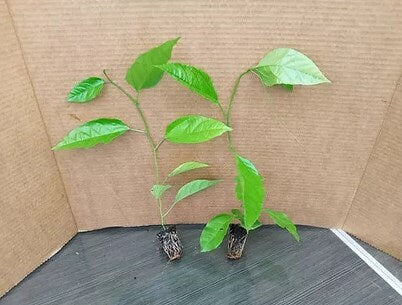Cultivating the Tropical Wonder: Growing Giant Granadilla Passion Fruit
The Giant Granadilla, scientifically known as Passiflora quadrangularis, stands as the largest of the passion fruit varieties, boasting not only its impressive size but also its delightful flavor and medicinal benefits. Known for its lush, vigorous vines and strikingly beautiful flowers, the Giant Granadilla is a tropical perennial that can add an exotic flair to any garden. This guide will delve into the essentials of cultivating Giant Granadilla passion fruit trees, ensuring that gardeners of all levels can enjoy a successful harvest of this extraordinary fruit.
Understanding Giant Granadilla Passion Fruit
Originating from tropical America, the Giant Granadilla is revered for its large, square-shaped fruit which can grow up to 12 inches in length. The fruit's rind is thick and hard, but inside, it reveals a soft, fragrant pulp dotted with edible seeds. The plant itself is robust, capable of climbing up to 50 feet if supported properly, making it an excellent choice for vertical gardening. Its vibrant and intricate flowers are not only visually appealing but also attract pollinators to your garden.
Selecting the Right Location
1. Sunlight Needs: Giant Granadilla requires full sun to partial shade, with a preference for a sunny spot that receives at least six hours of sunlight daily. Adequate sunlight is crucial for optimal growth and fruiting.
2. Soil Requirements: This vine thrives in rich, well-draining soil with a pH between 6.5 and 7.5. It is important to ensure good drainage as the roots are prone to rot in stagnant water.
Planting Giant Granadilla Passion Fruit
1. Optimal Planting Time: The best time to plant Giant Granadilla is at the beginning of the warm season, just after the last frost in spring, or in tropical climates, any time during the rainy season when the soil is moist.
2. Planting Method: Prepare a large planting hole that is twice as wide and as deep as the root ball of your plant. Incorporate a generous amount of organic compost into the soil to enhance its fertility. Plant the vine, ensuring that the base is level with the soil surface, then backfill the hole, tamp down gently, and water thoroughly.
Care and Maintenance
1. Watering: Regular watering is crucial, especially during the dry season or in hot climates. Water deeply once or twice a week, allowing the soil to dry out slightly between waterings to prevent root rot.
2. Mulching: Apply a thick layer of organic mulch around the base of the vine to help retain soil moisture, suppress weeds, and provide nutrients as it decomposes.
3. Fertilization: Feed the Giant Granadilla with a balanced, slow-release fertilizer every two to three months during the growing season. Ensure the fertilizer is rich in potassium to enhance fruit production.
4. Support Structures: Given its climbing nature, providing a sturdy trellis or support is necessary to accommodate the growth of the vine. This will also help to expose the fruits and leaves to adequate sunlight and air circulation.
5. Pruning: Prune the vine in late winter or early spring to remove dead or overcrowded branches. This helps to stimulate growth and improve the overall health of the plant.
Harvesting Giant Granadilla Passion Fruit
Giant Granadilla fruits are typically ready for harvest when they begin to show a slight give under pressure and the skin has a fine wrinkle. The fruit should be cut from the vine rather than pulled to avoid damaging the plant.
Overcoming Challenges
While generally robust, the Giant Granadilla can encounter issues such as pests and diseases common to passion fruit vines, including fusarium wilt and fruit flies. Regular inspections and proactive management can help keep these problems at bay.
Conclusion
Growing Giant Granadilla passion fruit can be a truly rewarding experience, providing not only delicious fruits but also enhancing the aesthetic appeal of your garden with its dramatic flowers and lush foliage. By following these guidelines and providing diligent care, gardeners can enjoy the unique pleasures of cultivating this exotic vine. Whether for culinary use, nutritional benefits, or simply the joy of gardening, the Giant Granadilla offers a splendid addition to any tropical or subtropical garden.







